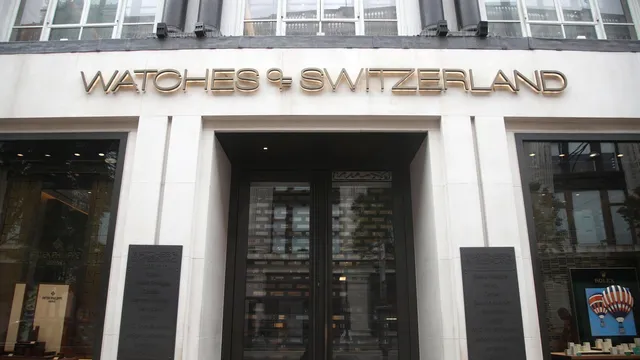
Watches of Switzerland warns of profit margin decline amid tariff threats
2025-07-04 00:00- Watches of Switzerland reported a significant rise in U.S. sales, surpassing $1 billion for the first time amid ongoing tariff discussions.
- The company disclosed that potential tariffs could lead to profit margin declines and price increases on their product lines.
- In light of these challenges, Watches of Switzerland remains confident in its business model, eyeing growth opportunities despite market uncertainties.
Express your sentiment!
Insights
In recent months, Watches of Switzerland, a luxury retailer known for selling high-end watches, has faced challenges primarily due to proposed U.S. tariffs on European imports. Following President Donald Trump's announcement of a 10% tariff, the retailer warned that its brand partners had already implemented mid-single digit price increases across their product ranges. Despite achieving record sales of $1.65 billion in the year ending April 27 and surpassing $1 billion in U.S. revenue for the first time, concerns around potential tariffs have overshadowed overall performance. The company noted that tariffs might affect not only pricing but also the authorized distribution networks, leading to a pessimistic review of margins moving forward. The forthcoming deadline for tariff negotiations adds uncertainty to the situation, as Trump has threatened higher tariffs if discussions fail, causing stocks to dip significantly since the announcement. Many stakeholders are observing the unfolding situation closely, understanding that further price hikes will impact consumer behavior in the luxury segment, where Watches of Switzerland plays a significant role. Brian Duffy, the CEO, expressed confidence in the company's long-term strategy despite immediate challenges, emphasizing growth plans and showroom openings as key components for future success. U.S. demand has seen a robust uptick post-pandemic, contrasted by a sluggish market in the UK, suggesting that the U.S. operations may hold significant promise if tariff issues can be resolved promptly. The broader luxury market is also experiencing shifts, with brands reconsidering marketing and distribution strategies in light of these economic pressures, implying a need for adaptation in business models to sustain growth. Stakeholders and analysts will be monitoring Watches of Switzerland’s response steps closely, as any financial adjustments could indicate larger trends within the industry as a whole.
Contexts
The luxury watch industry, characterized by its elegance and craftsmanship, has faced significant challenges in recent years, particularly due to the imposition of tariffs. These tariffs, primarily enforced to protect domestic industries and address trade imbalances, have had a profound impact on the pricing structures, consumer behaviors, and market dynamics within the luxury watch sector. As tariffs increase the cost of importing luxury timepieces, both manufacturers and retailers are compelled to re-evaluate pricing strategies, often leading to inflated prices that can alienate target demographics. This upward pressure on prices particularly affects consumers in key markets, where the allure of luxury watches may diminish as affordability becomes a prominent concern. Consequently, consumer demand may shift, prompting a reassessment of growth strategies by industry leaders. Furthermore, the geopolitical landscape plays a critical role in shaping the market dynamics of the luxury watch industry. Tariff policies are often influenced by international relations, trade agreements, and economic negotiations which can create unstable environments for manufacturers who rely on imports and exports. In particular, brands that manufacture outside their primary markets must navigate these complexities, incurring additional logistical costs and time delays. Luxury watch companies have responded by seeking alternative production locations, broadening their supply chains, or absorbing some of the increased costs to maintain market competitiveness, thus revealing the interconnectedness of global trade and the luxury sector. Additionally, the impact of tariffs extends beyond immediate financial implications and affects brand positioning and strategy. Some luxury brands have leveraged these challenges as an opportunity to enhance their marketing narratives, focusing on local craftsmanship or unique selling propositions. This strategic pivot not only helps justify higher prices amid rising tariffs but also cultivates a sense of exclusivity and desirability among consumers. Additionally, brands are increasingly investing in direct-to-consumer channels, enabling them to mitigate some of the tariff-induced costs by reducing reliance on third-party retailers that are also affected by the increased prices. In conclusion, the impact of tariffs on the luxury watch industry is multifaceted, influencing everything from pricing strategies to consumer perceptions and brand positioning. As the market continues to evolve in response to changing tariff policies, companies within the luxury watch segment must remain agile, adapting to both local and international economic shifts. The ongoing challenge will be to balance profitability with consumer expectations while enhancing brand integrity in a competitive and ever-evolving marketplace.